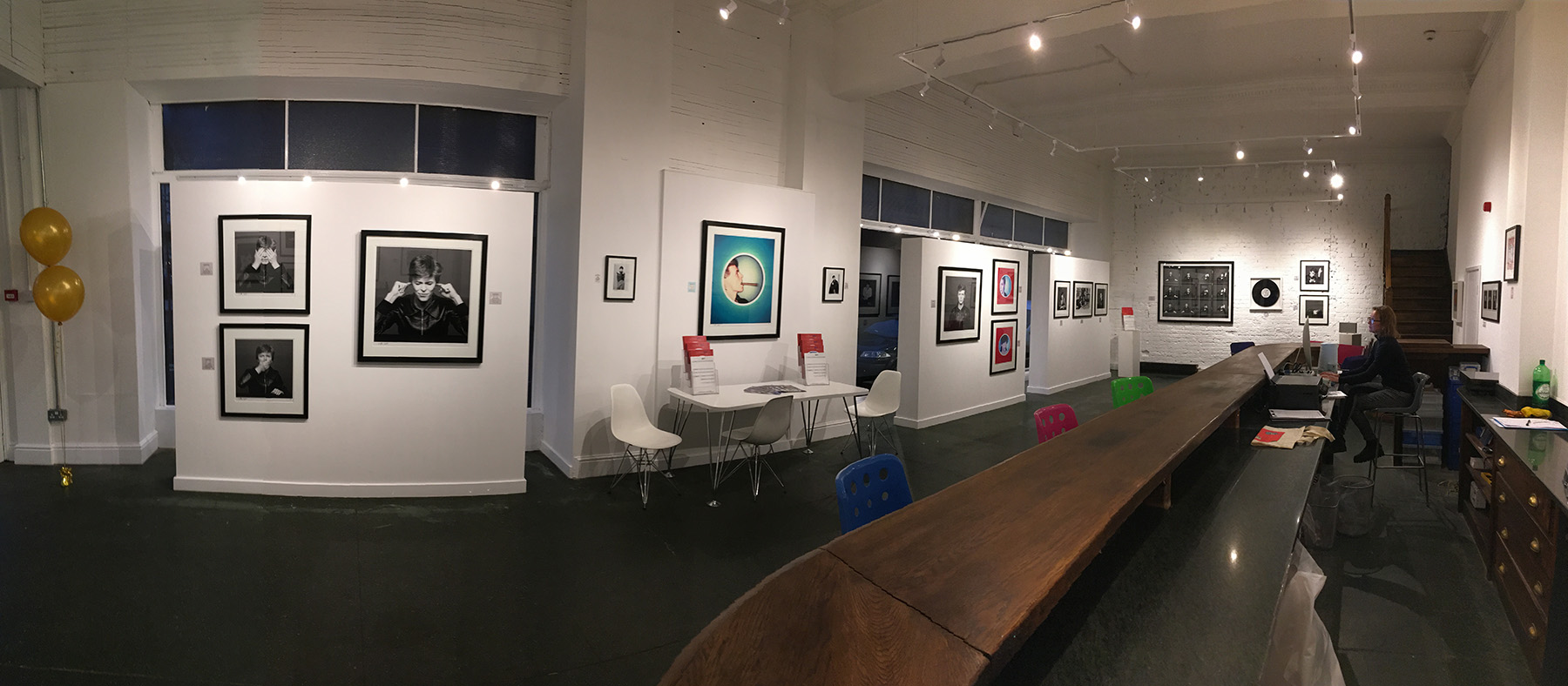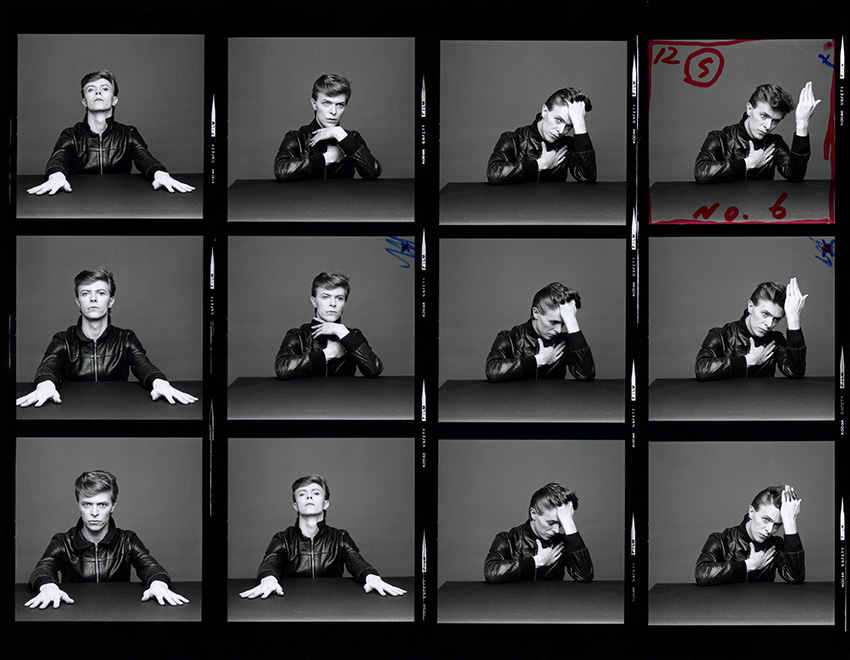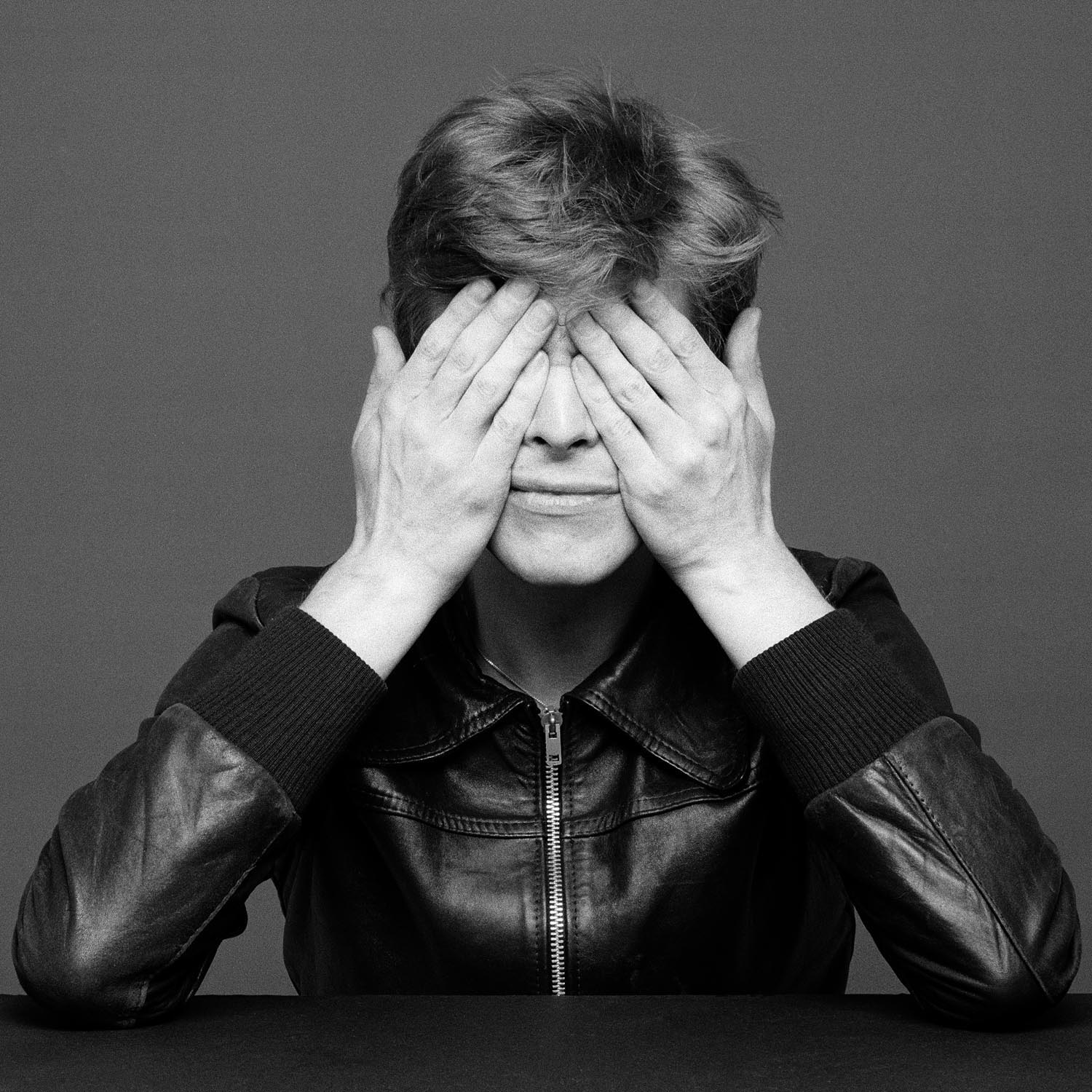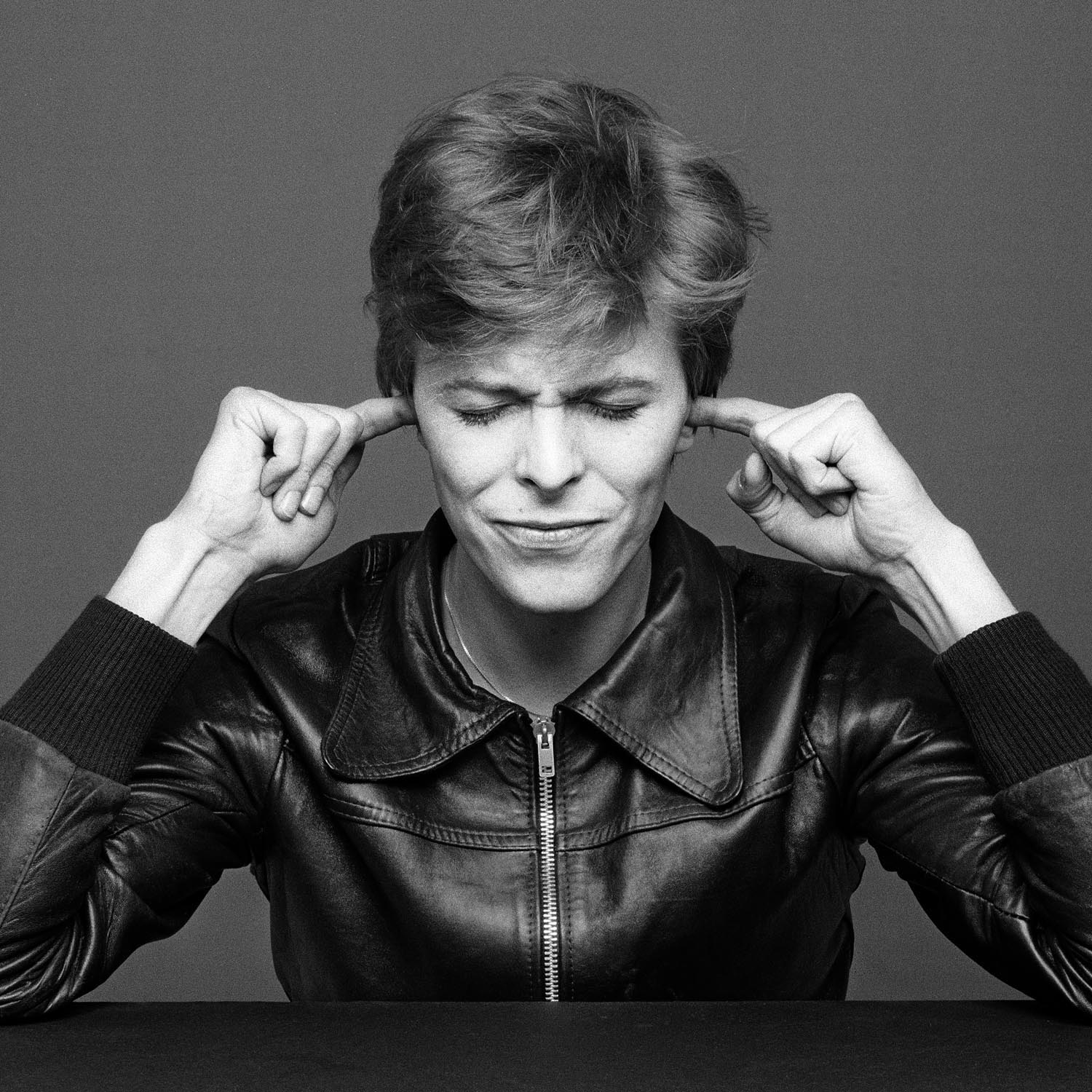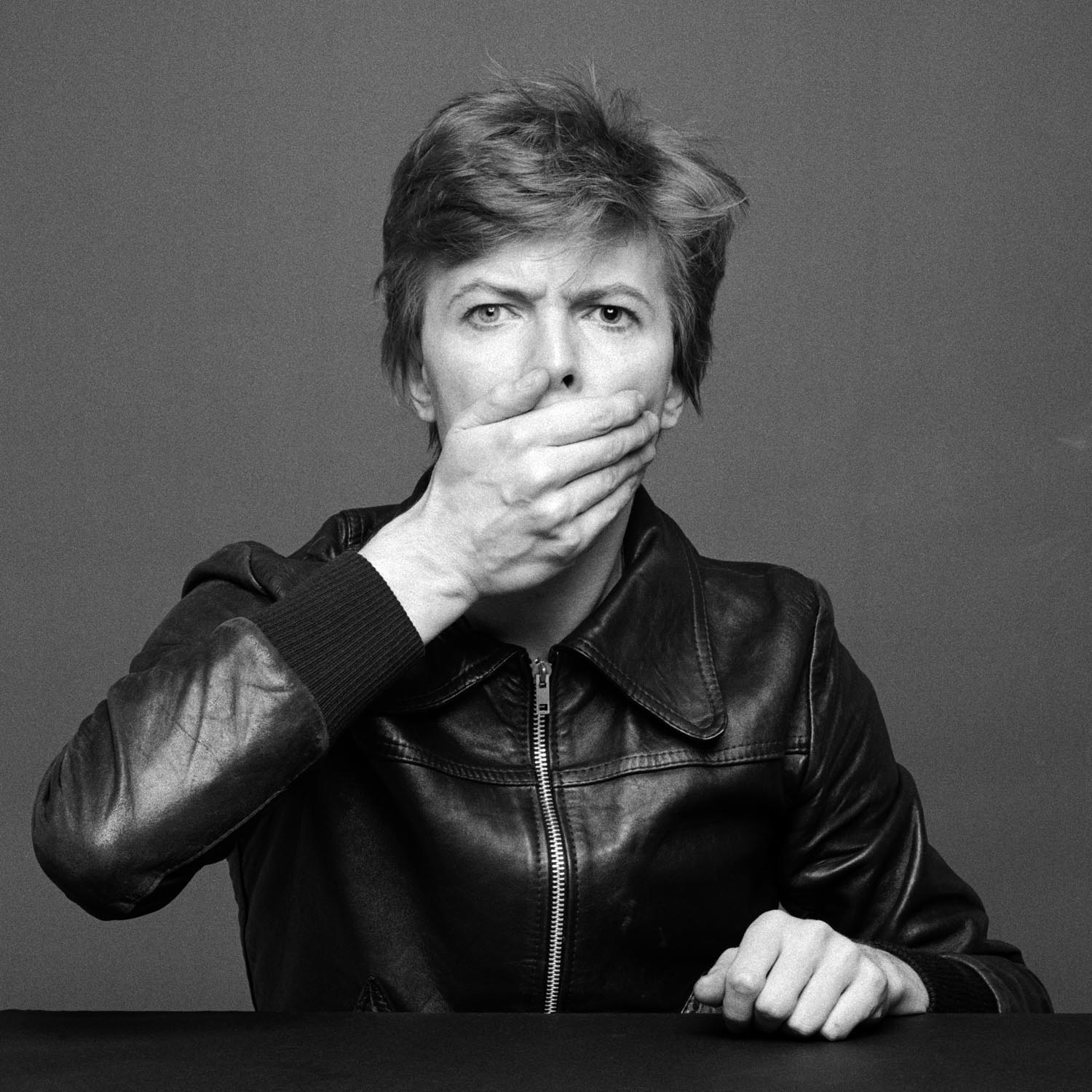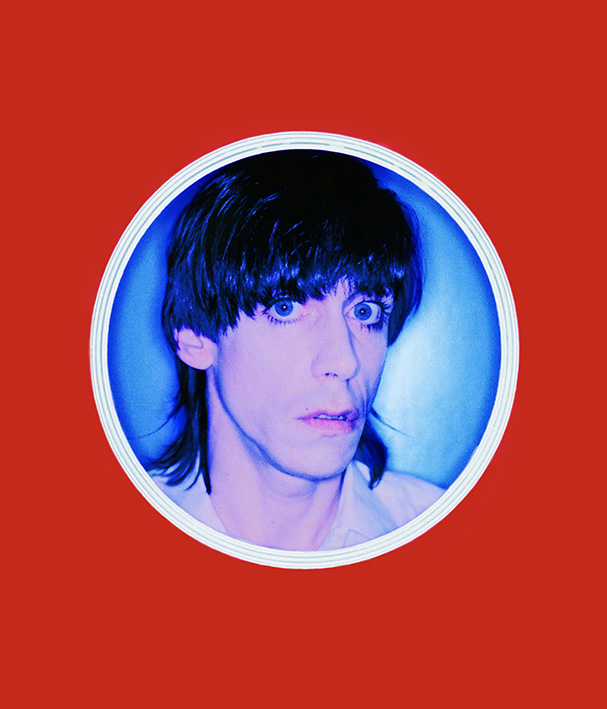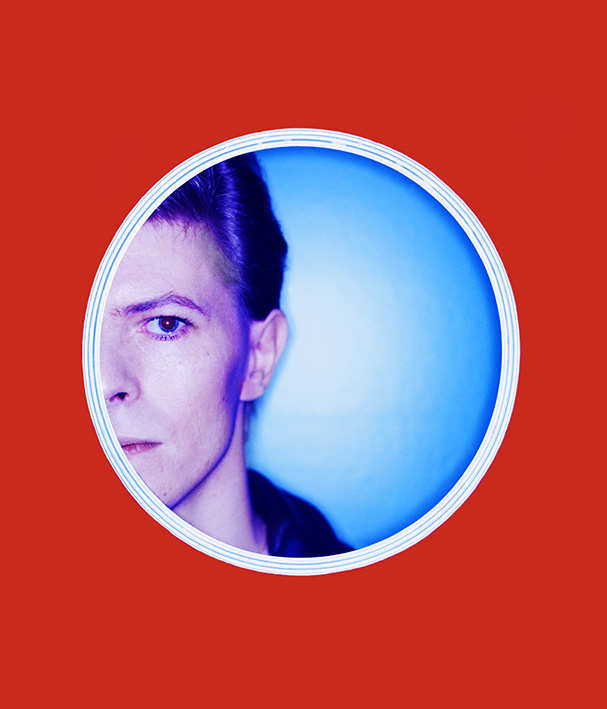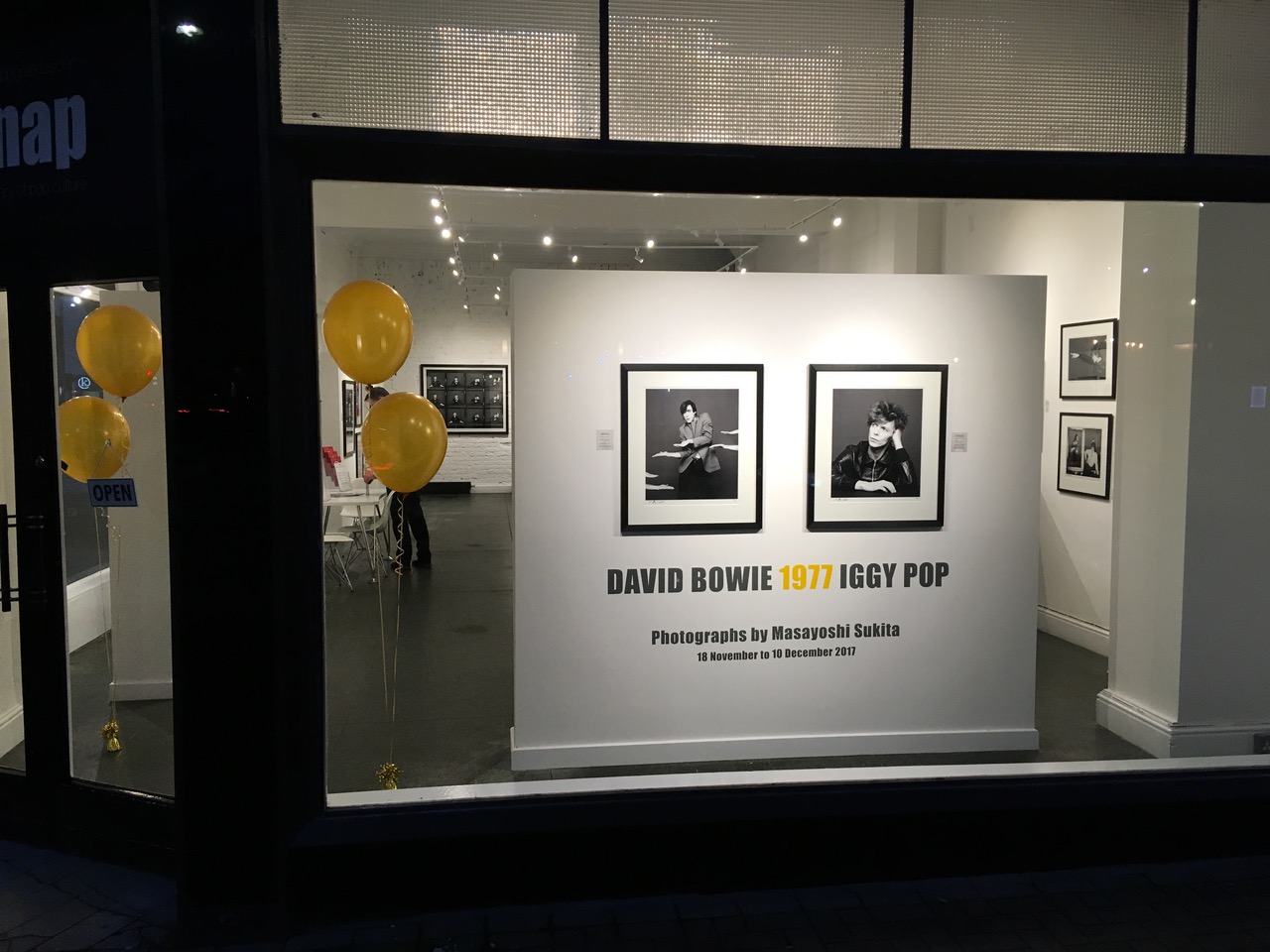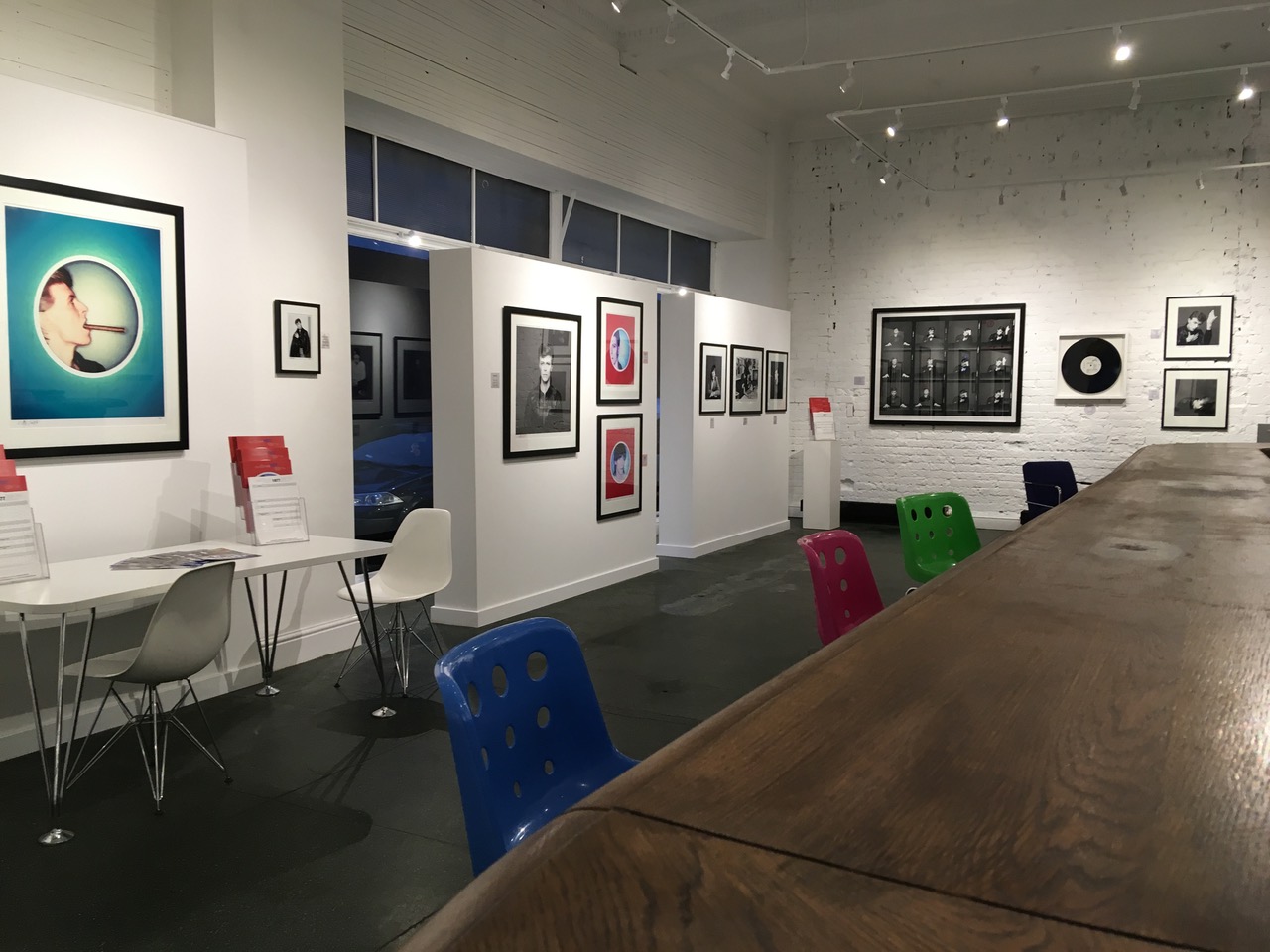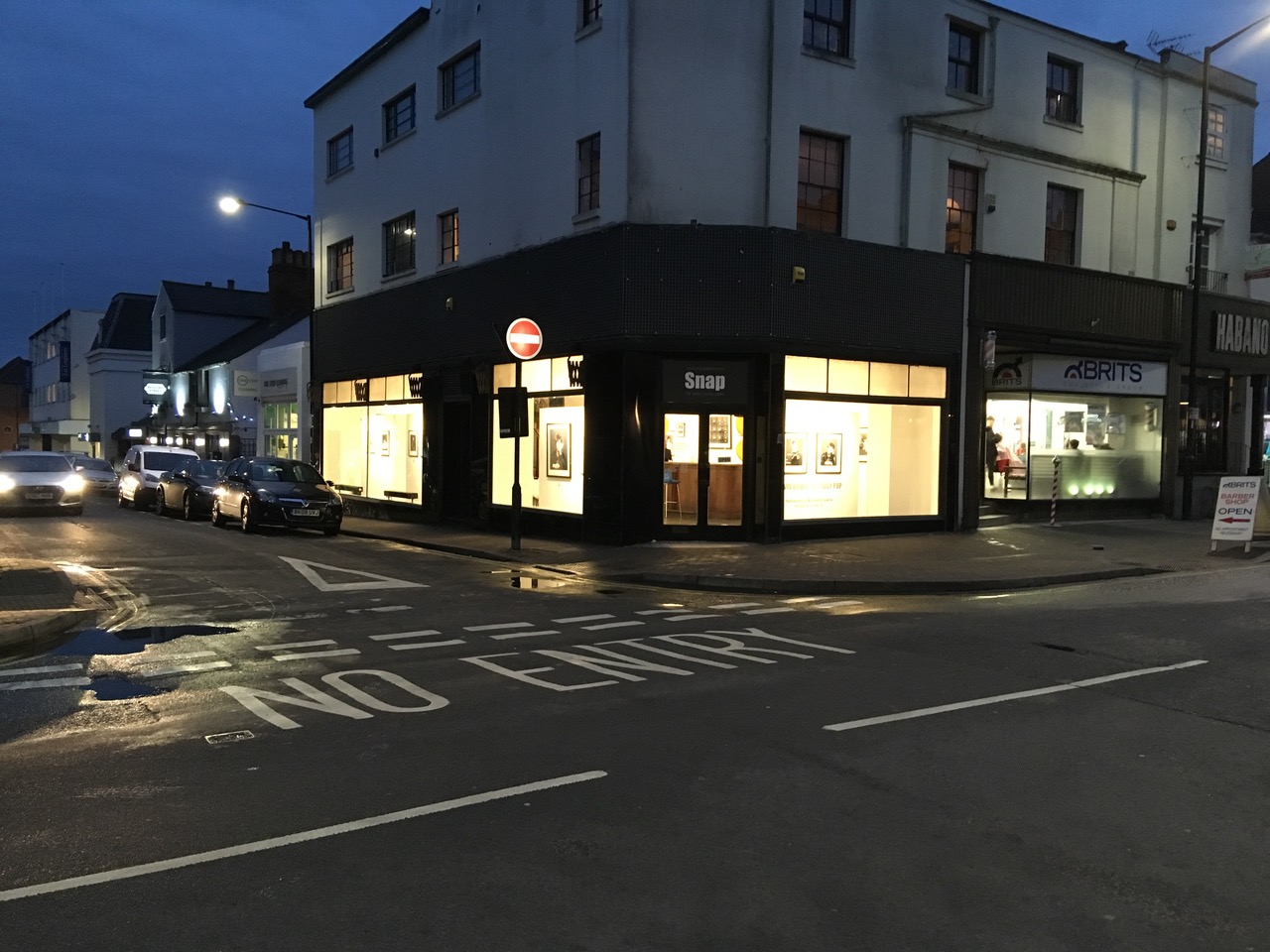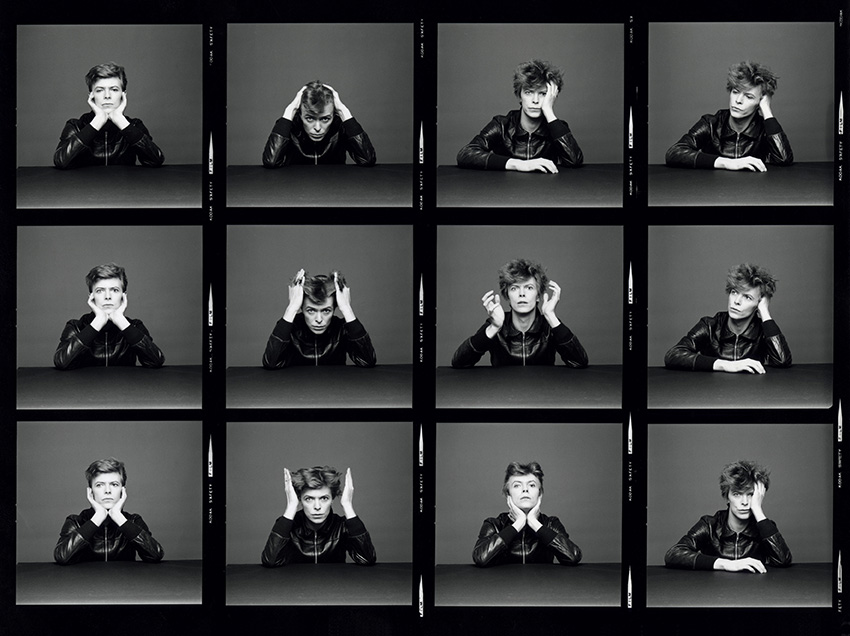DAVID BOWIE 1977 IGGY POP
Photographs by Masayoshi Sukita
Saturday 18 November to Sunday 10 December 2017
Masayoshi Sukita’s photographs need no introduction to David Bowie aficionados.
We celebrated Sukita-san’s photographs of Bowie-san with a broad retrospective in 2013. Now, for this first exhibition in our beautiful new gallery space in the centre of Leamington Spa, we turn the spotlight on 1977, when Sukita-san photographed David Bowie and Iggy Pop in what proved to be a pivotal year in both their careers.
Let’s turn back the clock to April 1977. Iggy Pop had released his debut album The Idiot in March 1977, with David Bowie in the producer’s chair, and the following month, both artists visited Tokyo to promote the album.
What a time to have been a fly on the wall. Even better to have been in the soup. Masayoshi Sukita, who by then had been working with David Bowie for almost five years, photographed them on their trip: at the airport, at press conferences and in their hotel rooms.
Photographs from trip would be used on the front cover of David Bowie’s “Heroes” album, released in October of that year, and on the front cover of Iggy Pop’s Party album, released a few years later.
The photograph alongside is my personal favourite. It’s so serene. Just perfect. Hope you can see the exhibition in the flesh, but if not, fill your boots online.
Guy White
Gallery Director
David and Iggy. Same time, same place, same table.
Here’s the interesting thing. In the small studio where Sukita-san created the iconic cover image for “Heroes”, both Iggy Pop and David Bowie were there. He divided up the session–one hour for David, and one hour for Iggy.
The “Heroes” contact sheet
This a very special large format version of Masayoshi Sukita’s twelve frame contact sheet featuring that iconic cover image. The “Heroes” cover photograph appears in the top right hand corner.
The contact sheet is available as a signed limited edition in two physical size options, each one signed and numbered on the front under the image area by Masayoshi Sukita. These physical size options are larger than Sukita-san’s typical sizings — to enable the viewer to better appreciate the individual frames.
The smaller of the two versions is made on 30 x 40 inch paper, an edition of 20 worldwide, and each individual frame measures approximately 7 x 7 inches. The larger version is made in a staggering 48 x 60 inch paper size, an edition of 10 worldwide, where each individual frame comes out at approximately 11 x 11 inches. It looks incredible in this ultra-large format. Visitors to the gallery during the exhibition will be able to see the ultra-large format version on the wall.
When we hosted Sukita-san’s first UK exhibition at our central London gallery in 2013, we included a set of three photographs at a significantly lower price to his standard pricing structure. Those pieces proved very popular, and in this new exhibition we are also including a set of three 8 x 10 inch signed limited edition photographs at a special price. Each photograph is also available to purchase individually in Sukita’s traditional sizes (starting with 16 x 20 inch paper), using the buttons under each image above.
All three photographs show David Bowie sitting at the same table where the iconic “Heroes” cover image was created, in late April 1977. For reasons that will be immediately obvious, they are titled “See No Evil”, “Hear No Evil” and “Speak No Evil”. They work beautifully as a set. Each photograph is made on 8 x 10 inch paper, with an image size of approximately 7 x 7 inches, and each one signed and numbered on the front under the image area by Masayoshi Sukita. All three photographs in each set have matched edition numbers, and this edition is limited to 100 sets worldwide.
The smaller 8×10 inch version is only available as a complete set of three. The button to purchase the 8×10 inch set is here:
David and Iggy in a frame
These two colour images are available to purchase in a small 8×10 inch version at a special price, alongside Sukita-san’s traditional sizes. Sukita-san used a circular cut-out frame for these portraits – this was a technique he was using for some of his fashion shoots at the time.
The “Heroes” cover image
During the trip, Sukita-san also arranged an impromptu shoot.
The location was a rented studio in Harajuku, Tokyo, which he had borrowed at very short notice from a photographer friend. There was no time for planning. The date is not known for certain but was towards the end of April 1977. The studio was very small—usually it was the setting for close up product shoots—and the two artists took it in turns to sit at the table. David went first. Iggy second. David Bowie tried on a number of leather jackets during the session, while Iggy Pop wore a white shirt and a very conventional sports jacket. The session was finished within two hours. At that point, nobody knew that one of the images from that session would appear on the cover of “Heroes”. That decision came later.
Sukita-san explains: “Rather than sending everything from a shoot, I always selected photographs by myself first, and David understood and respected that this was ‘my way’. So after they left Japan, I selected and printed around ten or so photographs that I liked. I sent them to David. Months later, he asked me if I was happy if one of them was used for cover of his upcoming album. It so happened that the one which both I and David liked the most was used as the “Heroes” album cover image.”
The “Heroes” cover image is available to purchase as an individual photograph, but quantities are extremely limited as the edition has almost sold out. An alternate image is also available – a variant of the cover image, and Sukita refers to this alternate as ‘The Next Moment?’
“I think they found something in each other that they didn’t have themselves. David found wildness in Iggy, Iggy found intelligence in David. It always seemed to me that this was the reason they worked very well with each other. They always looked like they had a great relationship.”
Masayoshi Sukita
The Harajuku shoot forms the backbone of this new exhibition, which features important images of David Bowie and Iggy Pop, including many available for the first time.
Sukita-san’s signed, numbered, limited edition photographs are available to purchase in a number of size options. For this exhibition, Sukita-san has selected a small number of pieces to offer in an 8×10 inch size, and also one piece to offer in a very large format 48 x 60 inch version. Other items are offered in more traditional sizes.
New location
